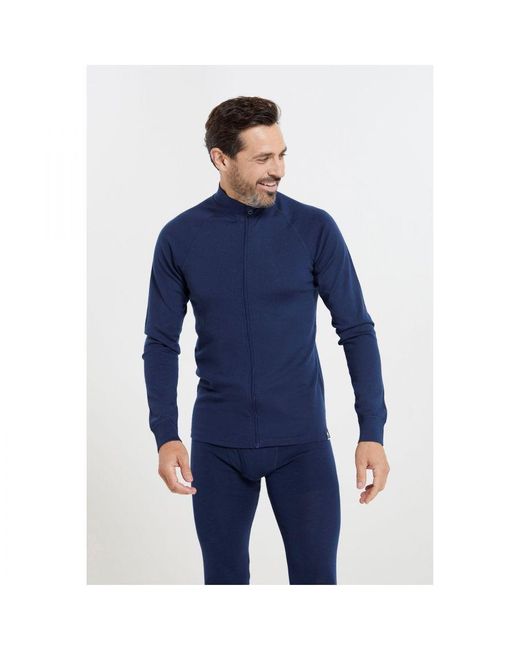Best Bamboo Clothing Info
Why Are The Base Layers Of Yak Wool Effective For Winter Sportswear In Terms Of Warmth/Temperature Regulation, Moisture Management, Durability And Comfort?Yak merino base layer is the best choice for winter sports clothing. They stand out due to a blend of factors that enhance the warmth and regulate temperature.
Insulating Properties - Merino and Yak both possess natural insulation properties. Yak wool, due to its hollow fibers, holds air, delivering exceptional warmth. Merino is also well-known for its insulation.
Regulates Body TemperatureThe fabric and the combined one helps regulate body temperature by absorbing heat in cold conditions while also allowing airflow to avoid excessive heat during intense activity.
Moisture Management-
Moisture-Wicking- Merino wool's properties to wick moisture draw moisture away from the skin, and help disperse it, stopping sweat accumulation. Yakwool can also help transport moisture. This helps keep the wearer dry and comfortable while engaging in intense physical activity.
Comfort-
Softness- Merino wool is renowned for its soft, fine fibers, which are gentle on the skin and less likely to cause irritation. The addition of soft fibers from yak, also known as merino wool, improves the comfort of your skin.
Odor Resistant - Both types of wool have antimicrobial natural properties that help reduce the growth of odor-causing bacteria. They also keep the garments fresh.
Durability-
Resilience and strength- Yak, which is naturally strong and durable, can be paired with merino in order to create the fabric that is tough and resistant. It's ideal for every activity.
Natural Fiber Benefits-
Renewability: Merino and Yak are both renewable and biodegradable fibers. They are also eco-friendly.
The wools are suitable to deal with a range of conditions.
Combining yak and wool merino this fabric can make use of both materials' strengths, providing warmth, controlling the temperature, regulating humidity and comfort, while offering durability. This is what makes yak and Merino wool bases layers ideal for winter sports wear. They are designed to meet the requirements of outdoor activity in cold climates, and also keeping the wearer dry and warm. View the top rated merino wool base layers for blog tips including merino long underwear, smartwool 250, smartwool long johns, skiing base layers, merino base layer, wool undershirt women's, ski thermals, smartwool quarter zip, smartwool base layer womens, sweaty betty base layers and more.

What Are The Advantages Of Bamboo Clothing With Regard To Thermal Regulation? Uv Protection. Biodegradability. Environmental Impact.
Thermal Regulation: Bamboo clothing is a fantastic option to regulate temperature. It also provides UV protection and biodegradability.
Insulation: Bamboo fabric is a natural material with natural thermal properties that allow for warmth in cold weather. It helps regulate body temperature by holding the heat during cooler temperatures and also allowing airflow to prevent overheating during physical activity.
UV Protection-
UV Resistance- Bamboo fabric provides natural protection from harmful UV rays. It could be an additional layer of protection against sun exposure by blocking a significant amount of ultraviolet radiation.
Biodegradability-
Eco-friendly- Bamboo clothing is biodegradable. It degrades without harmful residues and does not contribute polluting the environment. This means that clothing waste is reduced and its environmental impact.
Environmental Impact-
Sustainability- As a raw material bamboo is incredibly sustainable. It is able to grow quickly and in abundance without the necessity of pesticides or chemical fertilizers, which reduces the impact on the environment of cultivation. It's a renewable resource because of its fast growth.
Bamboo is a low consumption of water than other crops. This aspect contributes towards conservation efforts and reduces the burden on water resources.
Soil Conservation
Soil Health: Bamboo cultivation does not generally deplete soil nutrients or require extensive irrigation. It helps improve the health conditions in the soil and decreases the need for harmful agricultural methods.
Carbon Sequestration
Bamboos absorb carbon dioxide. They can absorb more CO2 and release more oxygen into the atmosphere compared to some other species. This property can help reduce carbon dioxide emissions and combat global warming.
Bamboo clothing has many advantages that include thermal regulation, UV blockage and biodegradability as well having a positive impact on the environment. This makes it an ideal option for those looking to purchase sustainable, functional clothes. These attributes are in line with environmentally conscious practices and offer benefits for both the wearer as well as the environment. Check out the most popular he said about bamboo clothings for blog advice including bamboo pants mens, sustainable bamboo clothing, ladies bamboo t shirts, bamboo cay shirts, bamboo family pajamas, bamboo yoga trousers, bamboo newborn clothes, carter's bamboo pajamas, bamboo sports clothing, bamboo trousers women and more.

What Is The Difference Between Wool And Merino Clothing?
In comparing merino wool, bamboo clothing and traditional wool on the basis of texture, warmth and moisture absorption. Texture-
Merino Wool - Merino Wool is known for being soft and having fine fibers. It has a more smooth and less scratchy texture in comparison to other kinds of wool. It is often regarded as more comfortable against the skin.
Bamboo ClothingBamboo clothing is silky and smooth that is often compared with luxurious materials such as cashmere or silk. The soft and delicate texture makes it comfortable.
Traditional Wool: Traditional wool can vary in texture; some varieties may be more coarse and more prone to causing discomfort or itching when compared with bamboo or merino clothing.
Warmth-
MerinoMerino Merino is a warm and comfortable material due to its insulation properties. It is a good insulation during colder weather and can retain warmth even in damp.
Bamboo Clothing - Bamboo clothing is warm, however it doesn't offer the same insulation like merino. It regulates the body's temperature and offers comfortable conditions for all kinds of weather.
Wool, like merino and bamboo clothing, is a great insulation. It can, however, feel heavier or bulkier compared to merino or bamboo clothing.
Moisture Absorption-
Merino Wool Merino Wool is a natural fiber that has outstanding moisture-wicking abilities. It draws moisture from the skin and then allows it to evaporate. It remains warm even when it is damp.
Bamboo Clothing Bamboo fabric has moisture wicking abilities that means it is able to draw out moisture and provide the comfort you need during your physical exercise. Bamboo clothing regulates humidity and keeps wearers dry.
Traditional Wool- Although wool can hold in moisture, it might not have the same moisture-wicking properties as bamboo or merino fabric. Certain types of wool may feel heavy or damp when wet.
Summary, merino has an enviable reputation for softness, warmth and effective moisture wicking. Bamboo clothing offers a silky smooth texture with sufficient warmth and moisture control. Traditional wool is diverse in texture and may offer warmth and moisture absorption however it may feel heavier or coarser compared to bamboo or merino clothing. Each fabric has distinct features that are customized to meet the needs of different people and tastes. See the top helpful hints for bamboo winter clothings for website info including ski layers, omniwool base layer, mens wool long johns, ski thermals mens, 100 merino wool base layer, 100 merino wool base layer, best thermals for skiing, merino base layer womens, best merino base layer, merino wool base layer mens and more.
